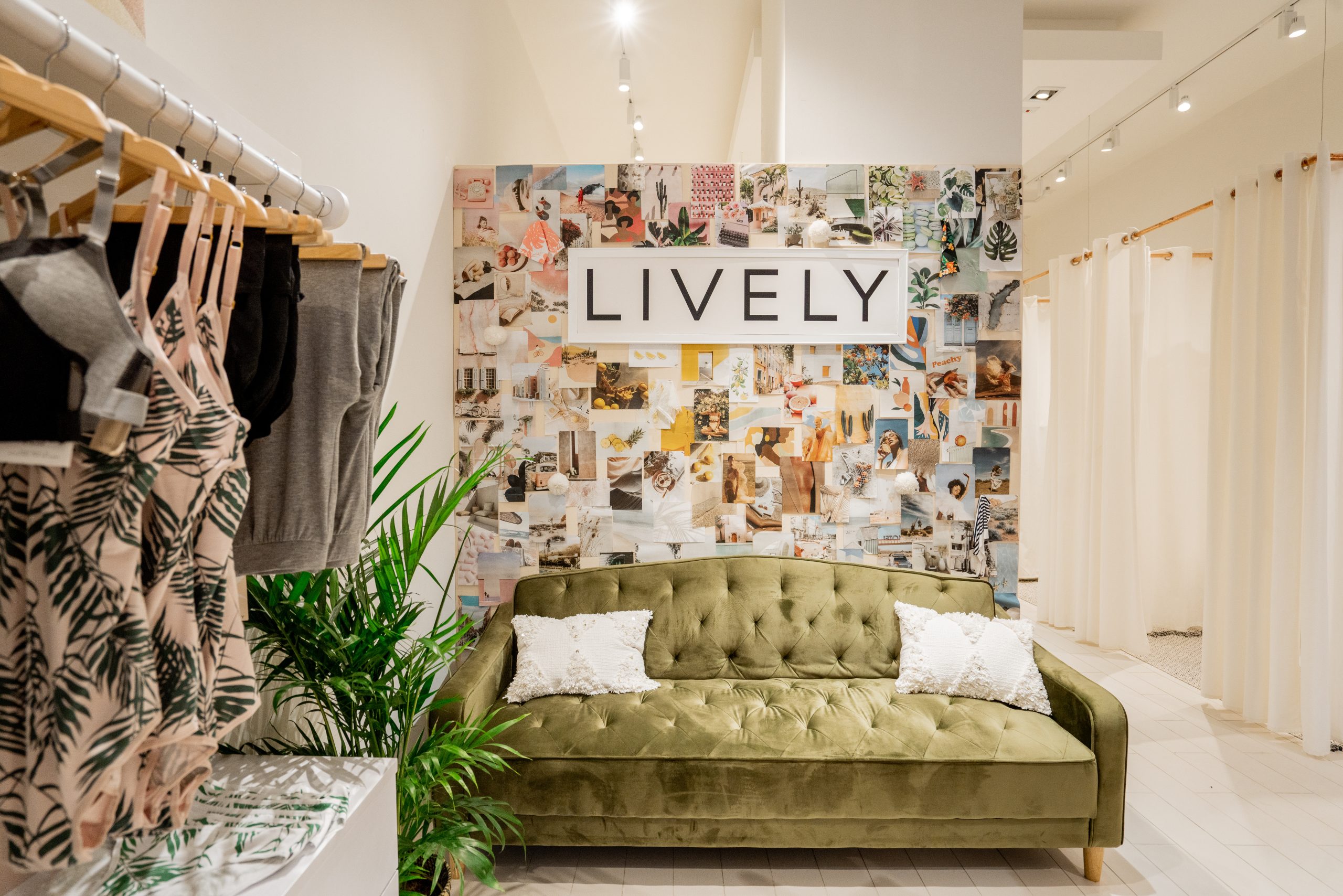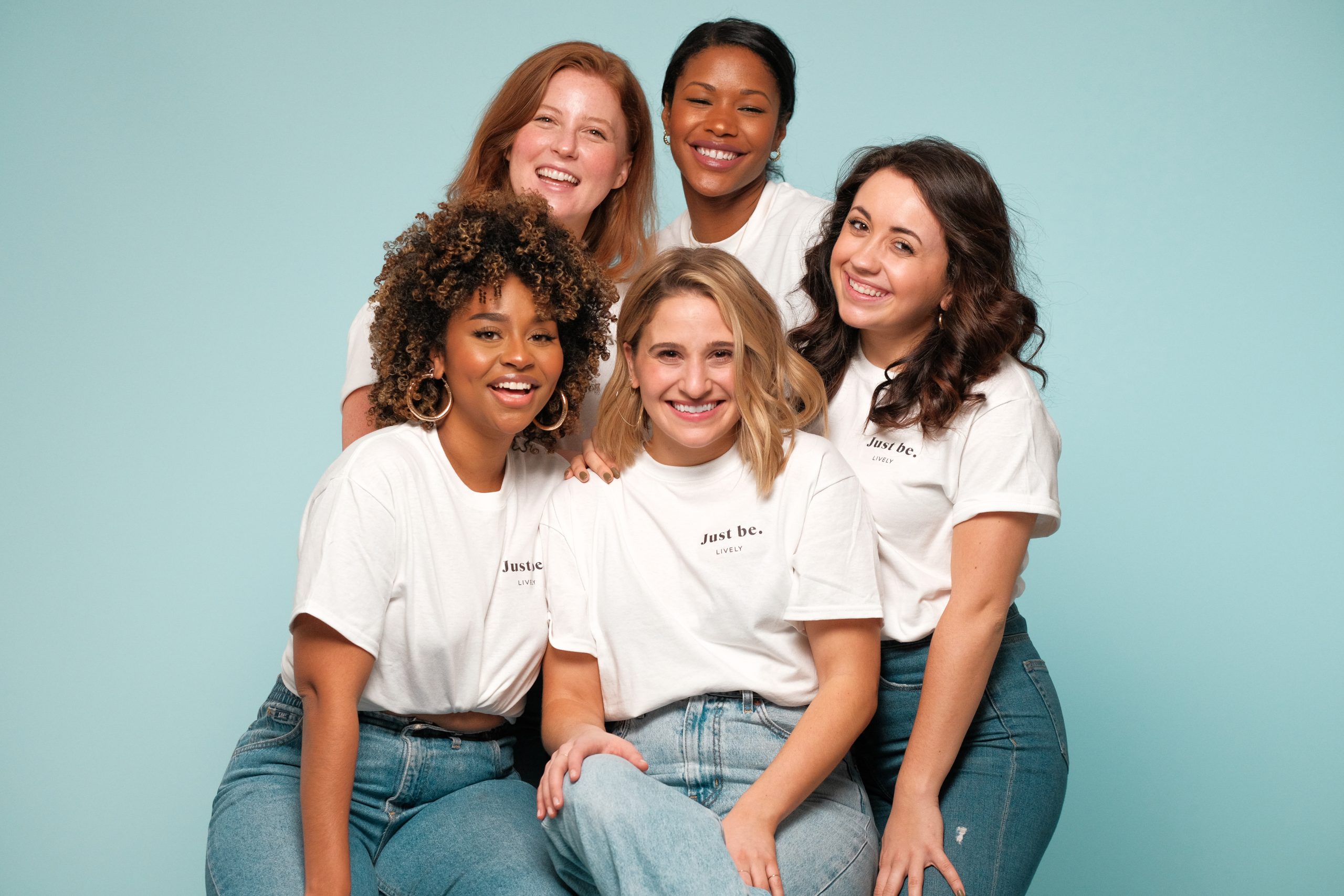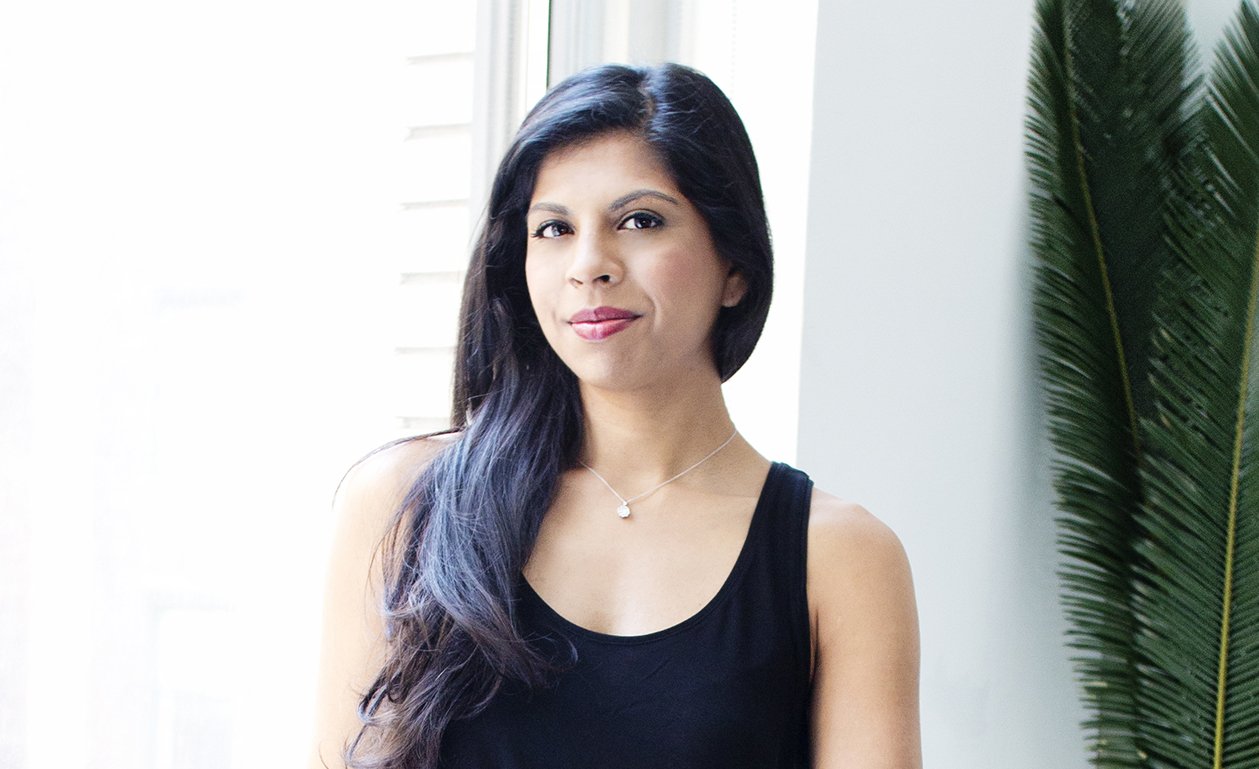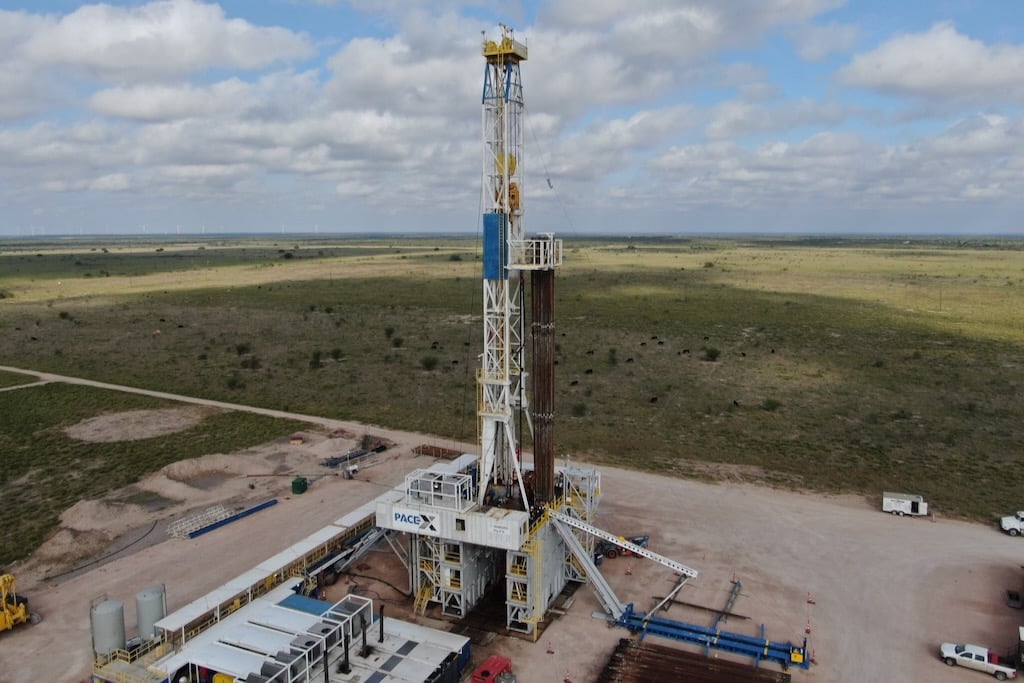Armed with years of corporate experience at Victoria’s Secret and motivated by a wish to make bra shopping an empowering endeavor, entrepreneur Michelle Cordeiro Grant founded the digital lingerie company Lively in 2015. Using Instagram to build customers and buzz, Cordeiro Grant tapped into a groundswell of women fed up with archaic ideas about underwear and femininity who were eager to share their thoughts and design ideas on social media.
Last summer, Cordeiro Grant sold Lively for $85 million to Wacoal, staying with the company as founder and CEO. Today, Lively has more than 100,000 social media ambassadors, stores in Austin, Boston, Chicago and New York, and partnerships with Nordstrom and Madewell. Cordeiro Grant told us how she built the brand, where it’s heading and why her “insane hunger” is the key to her success.

Q: Lively is known for fostering community, which can be a very amorphous word. How do you define Lively’s “community”?
A: It is a very often used word. “Community” is the new “disrupter.” Our take is that building a brand has to be both digital and physical. A lot of new brands were built just on digital channels and marketing, but my belief with Lively is you have to have human interaction that creates endorphins and emotions, and makes people love, share and come back. We started with the idea that our community creates the brand. We’re not a company that speaks to the world, we’re a community that decides what to make.
We’re not a company that speaks to the world, we’re a community that decides what to make.
You had a very corporate background before launching Lively. Was relying on community input to guide you a frightening risk?
Starting a company was the risk—but building it from a community seemed like the logical thing to do. At my previous companies, we spent a lot of time in boardrooms negotiating with each other but never leveraging outside the walls, never talking to customers like you were meeting a friend.
In 2013, social globalization was happening, but corporations were not using that to its full potential. With Lively, I thought, what if we brought that social media community together and brought the old school retail branding to life?
Besides its online users, Lively now has four brick-and-mortar retail shops. Was that always your plan?
We always knew retail was in our future, but we never thought it would be this soon. What drove it was the community was growing so fast and it was exhausting to do events all the time with a small team. We realized quickly we needed a place to stand still to have the interactions, and they were ROI-positive, because people would leave these euphoric moments of our events—workouts, flower crown making, book launches—and say, “By the way, I want to buy a bra.”

It was in parallel with what I believe is a seven-year cycle. Digital pastures started in 2011, and by 2019, it’s more saturated and digital spaces are just one channel, not the channel.

How has adding physical retail spaces enhanced the brand?
It helped us with our biggest opportunity, which was to break the stigma around lingerie and bras. The category was dusty and dated, and women were like “ugh” every time they had to endure bra shopping. Our thesis was that we could break that dynamic. We started with changing the word from lingerie to “leisurée” and creating a new dialogue. This wasn’t 100 racks and 600 styles; it was more “come inside, chat with a friend and if you want to shop, we’ve created a logical shopping experience.”
We’ve got fitting rooms that are spacious. You and a friend can go into adjacent rooms. There’s a curtain between them that you can pull to create one big room. You don’t have to leave the room to show your friend. Our store environments are full of succulents. We have no carnations, no roses. Nothing the old regime would have done. All things that are new and relevant and forward.
What have been your greatest challenges since launching?
For us the challenge is really to stay focused. When you’re growing so rapidly, there are so many opportunities. Should I go international? Increase distribution? Say yes to all the buyers? Go on Amazon? We always held ourselves to the experience and community first. When you’re building a brand, it’s 100 percent about discipline and being consistent and to have the same narrative and experience over and over again.
We also coupled our focus with statistics. Startups fail 60 percent of the time within five years, so you have to hold on to the levers. Don’t pull them all at once.
What’s surprised you the most?
In 2016, when we launched, our utopian view was that we were going to have the community build the brand and be the face of the brand in all aspects. We had women of different sizes, shapes and mindsets right out of the gate. When we posted them on social media, they were loved. When we put them on our home page for commerce, we didn’t get the click-throughs we wanted. The world was ready for individuality in social media but hadn’t adopted it for the commerce side. Only post the #MeToo movement has that shifted. We are now able to use women in our community across commerce experiences. The world just needs time to change sometimes, and you’ve got to keep pushing.
What are you most proud of?
I’m most proud to build a company from concept, and now through exit, without ever compromising our core values. We never did a sale. All of our bras are always $35, regardless of size, color or style. We always kept community first. Even if you look at our org chart, the majority of our company is around marketing, brand and community. We have two designers and one developer. We stayed really lean in all areas except marketing.
You spent a large part of your career at Victoria’s Secret, which has such a specific sensibility and was deeply identified with the “angels.” It was also closely identified with founder Leslie Wexner, who’s been tainted by his close relationship with the late convicted sex offender Jeffrey Epstein. Recently, Wexner stepped down, and Victoria’s Secret was sold to a private equity firm. How do today’s consumers see that brand, and how has that influenced what you do with Lively?
Victoria’s Secret as a brand was built on Les’ vision of what the world needed at the time. It was for men and women to buy lingerie, prompted by the women asking, “How do I feel when I buy a bra and my significant other is looking at me?” And that was loved and praised for decades.
As the world started to shift, the brand wasn’t changing with it. We all see that now.
It’s something I saw in 2011 or 2012. There was no conversation around maternity or larger sizes. I had gotten married and thought about where I was going, and the brand wasn’t going with me. I started to no longer feel comfortable in the product. I was pushing myself into a product rather than the product hugging me.
Athleisure also started to develop, and the category of bras hadn’t moved with it.
I worked at Victoria’s Secret during a time of amazing growth. I learned how to build brands from Les. And he said building a brand was like shooting and creating a movie. If you think of the P&L and infrastructure of Lively, it’s very similar to what Victoria’s Secret did from a retail perspective.
The brand is something that is still a beacon and has significant market share in the United States. It’s in a struggle right now, but it will be interesting to see what happens under new leadership. For those of us who worked there, it’s bittersweet. We fostered friendships there, but a lot happened that a lot of us weren’t exposed to, and now everyone is learning.
How did you partner with Gelmart, the intimate apparel manufacturer?
It was like winning the lottery in terms of finding your first investor. I met the CEO Yossi Nasser in 2015, and he saw an opportunity to use the supply chain infrastructure he had to support digitally native brands. I was looking for a supply chain partner. He was willing to support a 22-size range bra. They were my first investors. They built a factory dedicated to us with no sales and no data that said it would work.
That sounds risky. What do you think made them trust you?
They saw that I had a deep understanding of what it takes to create a bra and market and brand it. They realized I had experience and insane hunger and passion for the idea.
The icing on that is that the market is $13 billion in the United States, and we all saw there was significant opportunity.
What influenced your decision not to start the company with funding from friends and family or VC money?
I knew that whoever I was going to take money from needed to be as bought in as I was. Gelmart was perfect because inventory for any consumer business is one of the biggest Achilles’ heels. Without the inventory, you’ll never see how big your company can be.
How did you decide to sell to Wacoal, and what was that process like?
The world works in very funny ways. Four years to the month of when Yossi and I met in 2015, I was introduced to Wacoal, and coincidentally, our first meeting was in the same building as my first meeting with Yossi. I was not interested in selling at the time, but Wacoal’s perspective on lingerie was interesting. They never wavered since their founding in 1948. They were founded in Japan to help women transitioning from kimonos to western clothing. When they came to the U.S. in the 1980s, Wacoal was floundering, but they committed to staying the course and became one of the biggest brands in the space.
There was an amazing alignment with Wacoal and Lively’s values. Our first conversation was not about numbers at all but about the ways we saw the world. The process was probably one of the most seamless out there. I didn’t even have a banker representing us. Everything was very calm and easy. Diligence is not easy, but we figured that out. We first met in January and by the summer, it was done.
What’s it like to still be involved in the company but no longer own it?
Over the last couple of months, I’ve been wrapping my mind around it. I’m a mother of two, and I equate a lot with children. The day we closed was very emotional and what I think it will feel like when my daughter leaves for college. This brand grew so quickly that she was ready to embark in the world in a whole new way. She no longer needed the same support. She is spreading her wings but still maintaining her identity.
Intimate apparel is a very competitive field, and a lot of other brands selling online have pretty savvy social media strategies. Who are your main competitors and how do you differentiate Lively?
When I was launching Lively, people said, “Why would you do that? There are so many other startups.” But I thought there should be lots of us. When I think about the word competition, I think more about collaboration. I want all of us to grow and thrive. Women need choices. While we would love for Lively to be the brand that they wear from the beginning to the end, there are different things women need. We just want the category to be thought of with women first.
When I think about the word competition, I think more about collaboration. I want all of us to grow and thrive.
When you are comfortable and confident, you can start to realize your power and lead in what you love. Whether that’s starting a company, starting a family or doing both, and just leaning into your passion. We’re giving women greater influence in the economy, creating products and jobs and environments that are more logical for women. It will support all facets of what drives more income, transactions and overall economic health.
In terms of other companies, I think Aerie has really transitioned well, and a lot of the new [direct-to-consumer brands] have great conversations and interesting ways to tell them. It’s what should have happened before, but it’s happening now.
Who are your professional and personal role models?
I love women like Diane von Furstenberg. She’s done an incredible job and is constantly reinventing herself with the same narrative. I really admire Sara Blakely and everything she’s done with Spanx.
What do you think are particular challenges and opportunities for female entrepreneurs?
As individuals, it’s difficult for us as women to shift our mindset toward going after things. I’m fortunate that my husband supports me 100 percent, but all too often we are really good at playing the supporting role versus the lead. Another challenge is fearing the unknown. We love to play it safe and are not natural risk takers. Leading by example and paying it forward is 100 percent something we should be participating in. I had a lot of amazing women help me within my corporate career and within the startup community. I want others to have the opportunities too.
You’ve spoken in interviews about expanding into completely different categories. What’s next?
We always said, “today, bras and undies; tomorrow, the world.” What’s next always comes from listening to women and what they want. We’re constantly innovating. We have exciting self-care products coming this spring. We launched swimwear in 2017. We have the capabilities to go after products because of our supply chain.
You’ve spoken about how involved your customers are and how their input directly influences your designs. How do you keep customers engaged?
We are constantly letting them take the lead, whether they want an event on social entrepreneurship, a book launch, a workshop on self-care. They’re telling us and we’re supporting them. It’s true for our designs too. The strapless bra, for example, came from their feedback. Women were saying, “We want to dance at a wedding and not keep pulling up our bra. Where’s the strapless bra we need?” We spent a year creating it, and it was a viral launch.
What’s the age range of your customers?
Eighteen to 65. We are age agnostic with our voice and tone. We believe that women of all ages need a brand and dialogue around passion, purpose and community. Women see Lively on Instagram and then tell their moms and aunts and sisters.

Is Lively still a company that only has female employees? If so, why is that important?
We do and it’s not purposeful. It’s not that we don’t want to hire men. It’s just that we are hiring people with the greatest passion. We’d love to have men in the company. We had one, and he was amazing.







